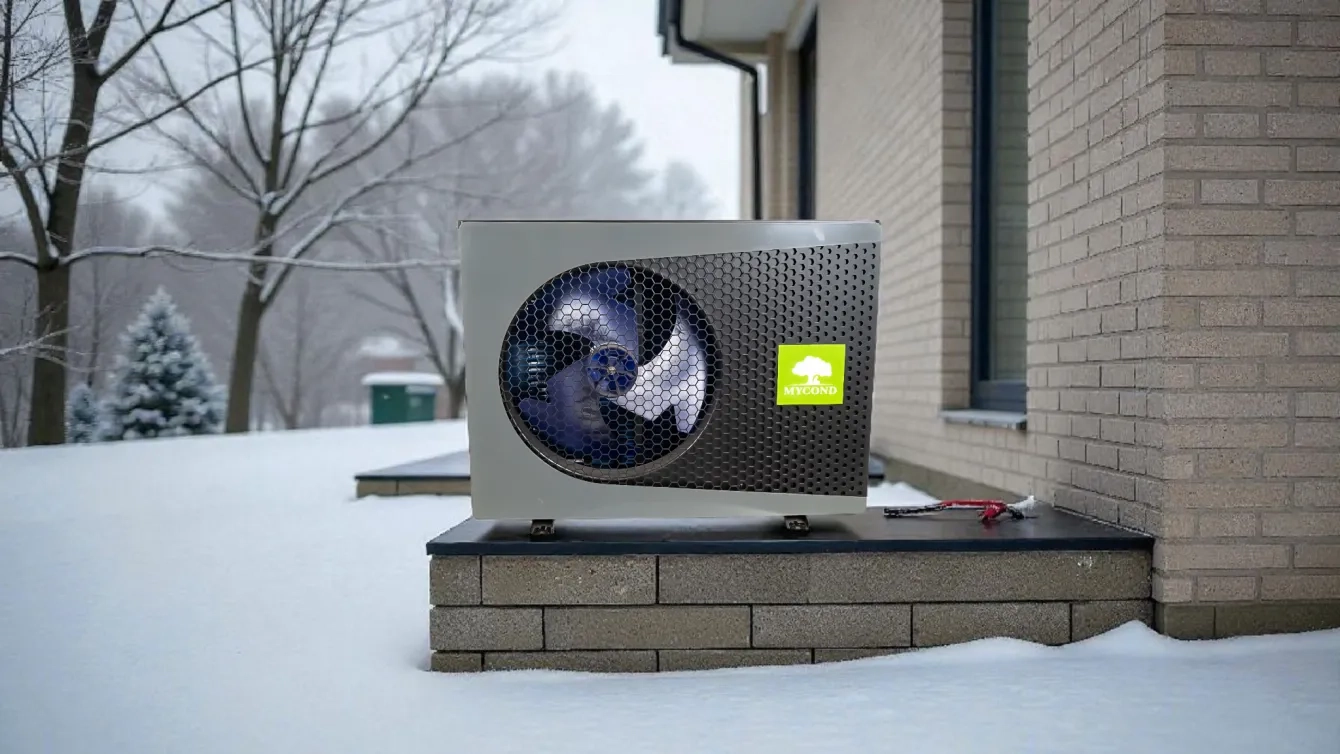
There is a common myth among homeowners and buyers of heating equipment: “A 200 m² house needs a heat pump of X kW.” This is a fundamental mistake that leads to the wrong choice of equipment, excessive costs or inefficient operation of the heating system. In reality, two houses with the same floor area can have heat demands that differ by 2–3 times, depending on the level of insulation, the age of the building and its construction features.
In this article, we look in detail at why heat loss, not floor area, is the key criterion for choosing a heat pump, and how to correctly calculate the required capacity for your 200 m² home.
Heat loss as the main criterion for selecting a heat pump
The most important factor for selecting the right heat pump is the home’s heat loss. It is the defining parameter for how much heat must be produced to maintain a comfortable indoor temperature.
Heat loss depends on many factors:
- The quality and thickness of insulation for walls, roof and floor
- The type and quality of windows and doors
- The number of external walls
- The presence of thermal bridges
- Ceiling height
- Age and construction method
European heat loss norms for different building types
According to European standards, these are typical average heat loss figures for different building types:
- New energy-efficient homes: 30-50 W/m²
- Renovated homes: 50-70 W/m²
- Older uninsulated homes: 100-150 W/m²
As you can see, the difference between a new energy-efficient home and an old uninsulated one can reach 3–5 times! Therefore, determining the actual heat loss is the first and most important step in choosing the correct heat pump.
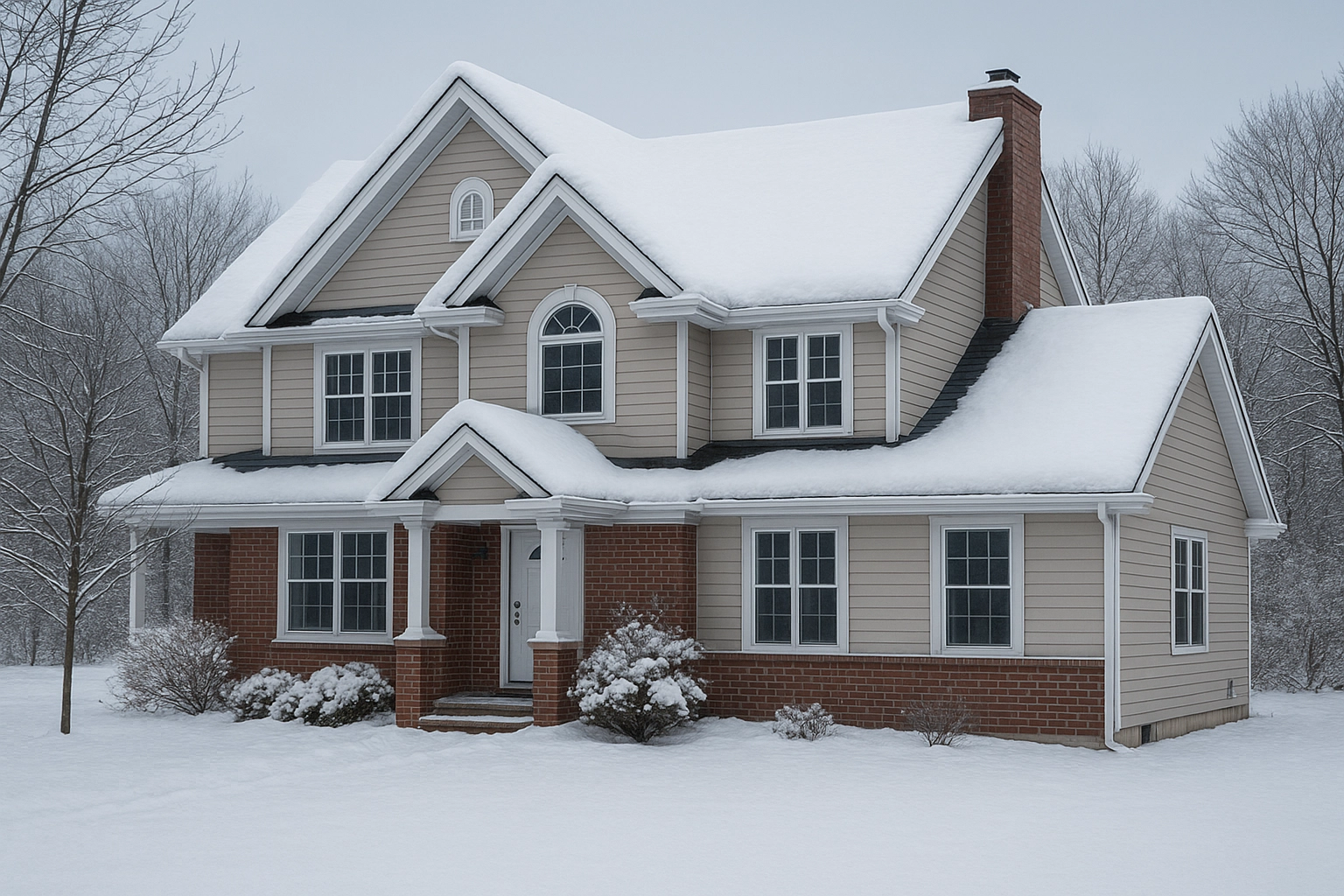
Calculating capacity for a 200 m² home
Let’s look at specific examples of calculating the required heat pump capacity for a 200 m² home depending on its insulation level.
Example 1: New energy-efficient home
For a new energy-efficient building with heat loss of 40 W/m²:
200 m² × 40 W/m² = 8000 W = 8 kW
Such a home will be adequately served by a heat pump with a capacity of 8–10 kW, with a small margin for peak loads.
Example 2: Renovated home
For a renovated home with partial insulation and heat loss of 60 W/m²:
200 m² × 60 W/m² = 12000 W = 12 kW
For such a home, a 12–14 kW heat pump will be optimal.
Example 3: Older uninsulated home
For an older uninsulated building with heat loss of 120 W/m²:
200 m² × 120 W/m² = 24000 W = 24 kW
In this case, the options are:
- A 24 kW heat pump as a mono-solution
- Bivalent scheme: a lower-capacity heat pump + a backup heat source
Operating principle of an air-to-water heat pump
Before looking at specific models, it’s important to understand the basic operating principle of an air-to-water heat pump.
This type of pump “collects” heat from the ambient air and transfers it into the home’s hydronic heating system. Even when outdoor temperatures are below zero, there is enough thermal energy in the air for the heat pump to use efficiently for heating.
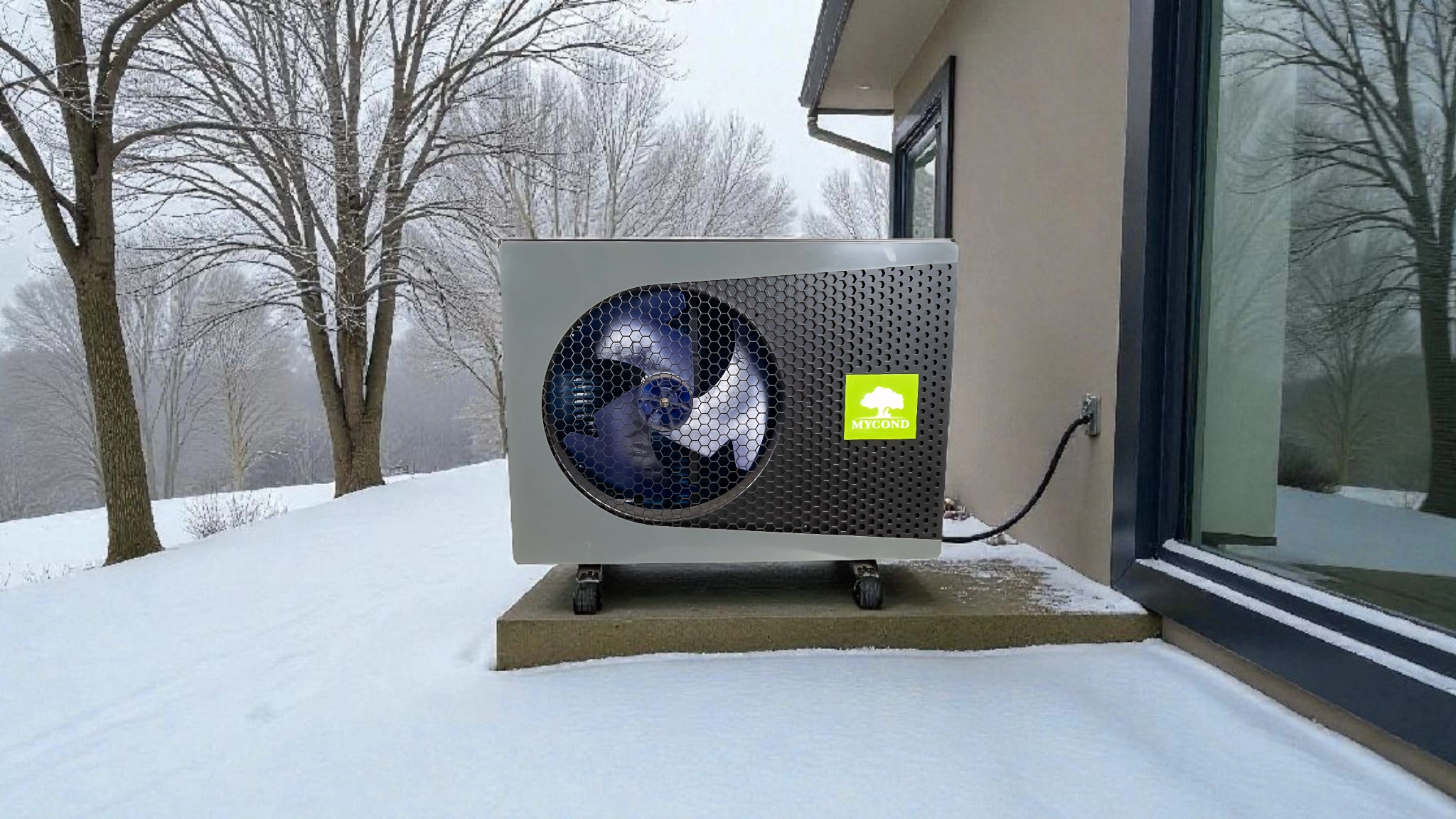
What is COP and why it matters
COP (Coefficient Of Performance) is the performance ratio showing the amount of heat produced compared to the electrical power consumed. For example, if COP = 4, it means that for 1 kW of electricity the system produces 4 kW of heat.
The COP changes depending on two key parameters:
- Outdoor air temperature: the colder it is outside, the lower the COP
- Flow temperature of the heating medium: the higher the flow temperature, the lower the COP
Therefore, when choosing a heat pump, it’s important to consider not only its nominal capacity but also its efficiency in different temperature regimes.
EVI technology in BeeThermic heat pumps
A key advantage of BeeThermic heat pumps is the use of innovative EVI (Enhanced Vapor Injection) technology in Panasonic compressors. This technology ensures efficient operation even at extremely low temperatures down to -25°C.
The principle of EVI involves additional injection of refrigerant vapour into the compressor at an intermediate compression stage. This allows you to:
- Increase the temperature and pressure of the refrigerant
- Boost heating capacity at low outdoor temperatures
- Maintain a high COP even in harsh climates
- Ensure stable system operation throughout the entire heating season
Thus, even at -10°C, BeeThermic heat pumps maintain a COP in the range of 3.0–3.4, which is an excellent figure for air-to-water heat pumps.
BeeThermic model range
BeeThermic offers a wide range of heat pump models, allowing you to select the optimal solution for homes of different sizes and insulation levels. Below are the main technical characteristics of the models:
| Model | Capacity (kW) at A7W35 | COP at +7°C (W35) | COP at -10°C (W35) | COP at +7°C (W55) | COP at -10°C (W55) | Sound level (dBA) | Supply voltage | Energy efficiency class |
|---|---|---|---|---|---|---|---|---|
| MHCM 06 SU1A | 6,46 | 4,93 | 3,42 | 3,17 | 2,27 | 63 | 230 V | A+++ |
| MHCM 10 SU1A | 10,58 | 4,62 | 3,21 | 3,12 | 2,24 | 66 | 400 V | A+++ |
| MHCM 14 SU3A | 14,58 | 4,60 | 3,19 | 3,03 | 2,17 | 68 | 400 V | A+++ |
| MHCM 18 SU3A | 18,77 | 4,51 | 3,13 | 2,97 | 2,13 | 70 | 400 V | A+++ |
| MHCM 24 SU3A | 23,98 | 4,34 | 3,02 | 3,08 | 2,14 | 71 | 400 V | A+++ |
All BeeThermic models are equipped with a reliable Panasonic compressor with innovative EVI technology, use eco-friendly R32 refrigerant and feature a monoblock design with an integrated hydronic module, including a circulation pump, expansion vessel and protection system.
The maximum flow temperature is +55°C (W55 mode), which is suitable for most radiator heating systems and underfloor heating, ensuring comfortable indoor temperatures.
Practical selection scenarios for a 200 m² home
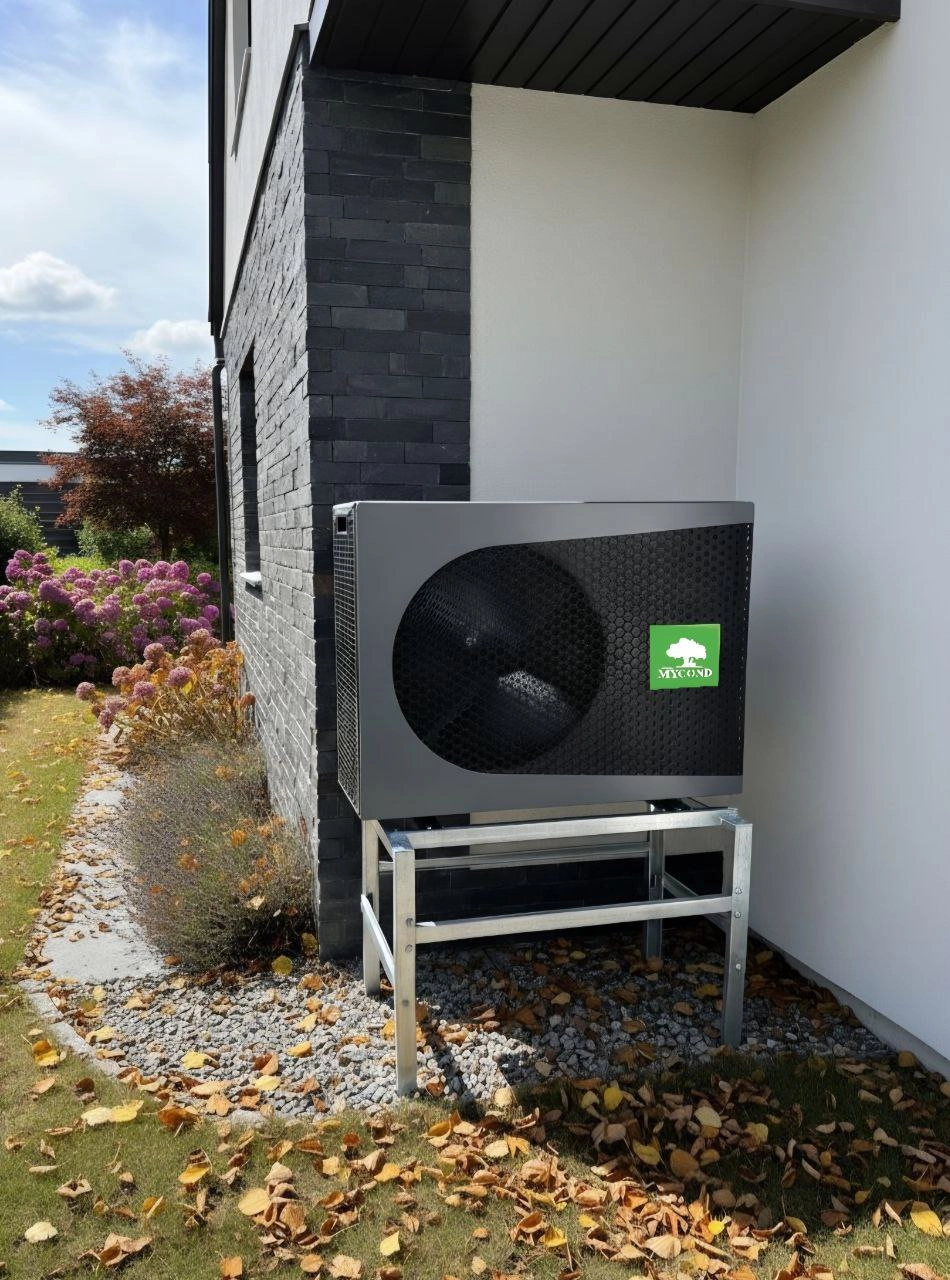
Scenario 1: New energy-efficient home
Parameters:
- Heat loss: 40 W/m²
- Total heat loss: 8 kW
- Recommended model: MHCM 10 SU1A (10,58 kW)
Why this model is optimal: It provides the necessary capacity margin (~25%) for peak loads on the coldest days. At the same time, the high COP (4.62 at +7°C) ensures economical operation for most of the heating season. Even at -10°C, the COP remains high (3.21), ensuring efficient operation without a backup heat source.
Scenario 2: Renovated home
Parameters:
- Heat loss: 60 W/m²
- Total heat loss: 12 kW
- Recommended model: MHCM 14 SU3A (14,58 kW)
Why this model is optimal: It delivers the best balance between capacity and efficiency. A capacity margin of around 20% guarantees stable operation even during the coldest periods. Thanks to EVI technology, the model maintains a high COP (3.19 at -10°C) throughout the heating season, making it a cost-effective solution without the need for backup heat sources.
Scenario 3: Older uninsulated home
Parameters:
- Heat loss: 120 W/m²
- Total heat loss: 24 kW
- Option 1: MHCM 24 SU3A (23,98 kW) as a mono-solution
- Option 2: Bivalent scheme — MHCM 18 SU3A (18,77 kW) + backup boiler (~6 kW)
Option 1: Suitable for regions with a mild climate where temperatures rarely drop below -15°C. The model fully meets the home’s heating needs.
Option 2: More economically justified for regions with harsh climates, where prolonged frosts below -20°C occur. The bivalence point (the temperature at which the backup boiler turns on) is usually set at -10...-15°C. In this way, the heat pump covers about 90% of the annual heat demand, and the backup boiler only turns on for short periods of extremely low temperatures.
Key advantages of BeeThermic heat pumps
- Panasonic compressor with EVI technology: ensures reliability, efficiency and durability
- Operation down to -25°C: stable performance even at extremely low temperatures
- Monoblock design: simplifies installation and reduces installation costs
- Wide temperature range: from W35 to W55 enables compatibility with different heating systems
- Energy efficiency class A+++: confirmed by the European Heat Pump Keymark certification
- Low noise level: from 63 to 71 dBA for comfortable operation
Installation, operation and economics
Advantages of the monoblock design
BeeThermic heat pumps have a monoblock design, meaning all main components are housed in a single unit. This significantly simplifies installation:
- No refrigerant lines are required
- All hydronic module components are already built in (circulation pump, expansion vessel, safety system)
- Reduced installation time
- Lower risk of installation errors
Compatibility with existing heating systems
BeeThermic is compatible with various types of heating systems thanks to its ability to operate in W35, W45 and W55 modes:
- Underfloor heating (optimally W35)
- Fan coils (optimally W45)
- Radiators (optimally W45–W55)
This makes BeeThermic an ideal solution for modernising older heating systems without the need to completely replace indoor equipment.
Real savings compared to traditional systems
Compared to traditional heating systems, a BeeThermic heat pump delivers significant savings:
- Compared to an electric boiler: at COP = 4 you get 4 kW of heat from 1 kW of electricity, i.e. 75% savings
- Compared to a gas boiler: savings depend on gas and electricity tariffs, but are typically 30–50%
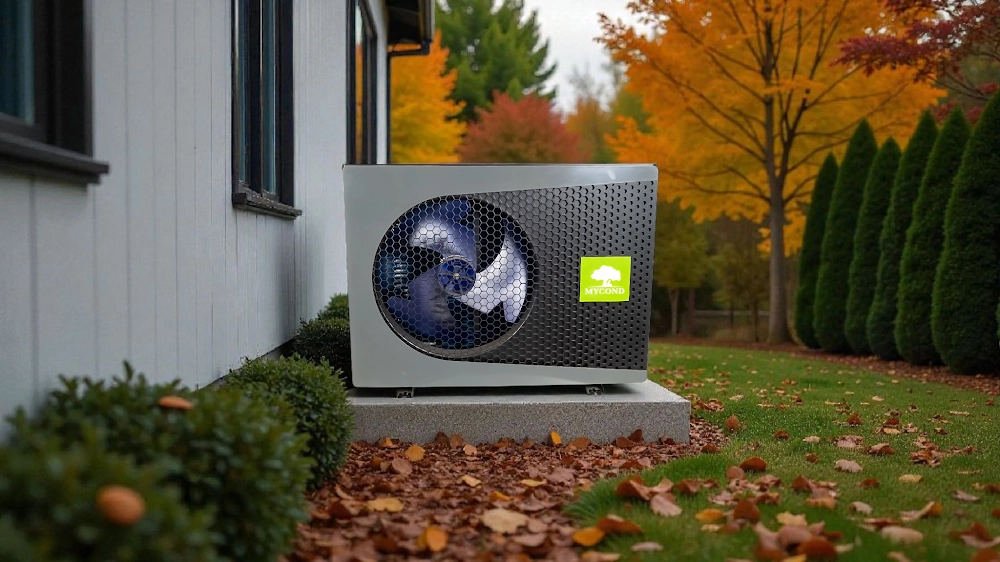
Frequently asked questions (FAQ)
Is 10 kW enough for a 200 m² home?
It depends on heat loss, not floor area. For a new energy-efficient home with heat loss of 40 W/m² it will be sufficient (8 kW + margin). For a renovated home with heat loss of 60 W/m² it will be insufficient (you need 12 kW). For an older uninsulated home with heat loss of 120 W/m² you need at least 24 kW or a bivalent scheme.
Does the BeeThermic heat pump work in winter at -20°C?
Yes, thanks to Panasonic’s EVI technology, BeeThermic operates efficiently down to -25°C. Although the COP decreases at extremely low temperatures, the system maintains stable performance even in severe winter conditions.
Can BeeThermic be connected to old radiators?
Yes, the maximum flow temperature of +55°C (W55 mode) suits most radiator systems, including medium-temperature radiators. Very old high-temperature systems may require upgrading or the use of a bivalent scheme.
What is the bivalence point?
This is the outdoor air temperature at which the heat pump’s output is no longer sufficient to cover heat loss, and a backup heat source switches on automatically. It is usually set at -10...-15°C. A bivalent scheme is especially economical for older homes with high heat loss.
How much electricity does a BeeThermic heat pump consume?
At COP = 4, to obtain 10 kW of heat you need 2.5 kW of electricity. For example, for the MHCM 10 SU1A model at +7°C (COP 4.62), to obtain 10,58 kW of heat you need about 2.3 kW of electricity. At -10°C (COP 3.21), for the same output you will need around 3.3 kW.
Is a backup boiler needed with BeeThermic?
It depends on the home’s heat loss and the climate zone. For well-insulated homes with heat loss up to 50 W/m², a backup source is not required. For older homes or regions with prolonged frosts below -20°C, a bivalent scheme can be economically justified.
How to determine your home’s heat loss?
You can use a simplified estimation by norms: 30–50 W/m² for new homes, 50–70 W/m² for renovated, 100–150 W/m² for older homes. For an accurate calculation, we recommend ordering a professional thermal audit.
Conclusion
The key takeaway from our article: the floor area of a home is not the main criterion for selecting a heat pump’s capacity. The crucial factor is heat loss, which depends on insulation quality, the age of the building and construction features.
BeeThermic heat pumps by Mycond are the optimal solution for different types of homes thanks to:
- A wide model range from 6 to 24 kW
- A Panasonic compressor with innovative EVI technology
- Stable operation even at -25°C
- A monoblock design that simplifies installation
- Energy efficiency class A+++, ensuring minimal operating costs
Mycond is a leader in its segment, offering comprehensive, modern and energy-efficient climate control solutions without overpaying for global brands, while ensuring high equipment quality and reliability.
For professional advice on selecting a BeeThermic heat pump for a specific site, taking into account heat loss, climate zone and heating system specifics, contact us by phone or fill out the form at the bottom of the page.